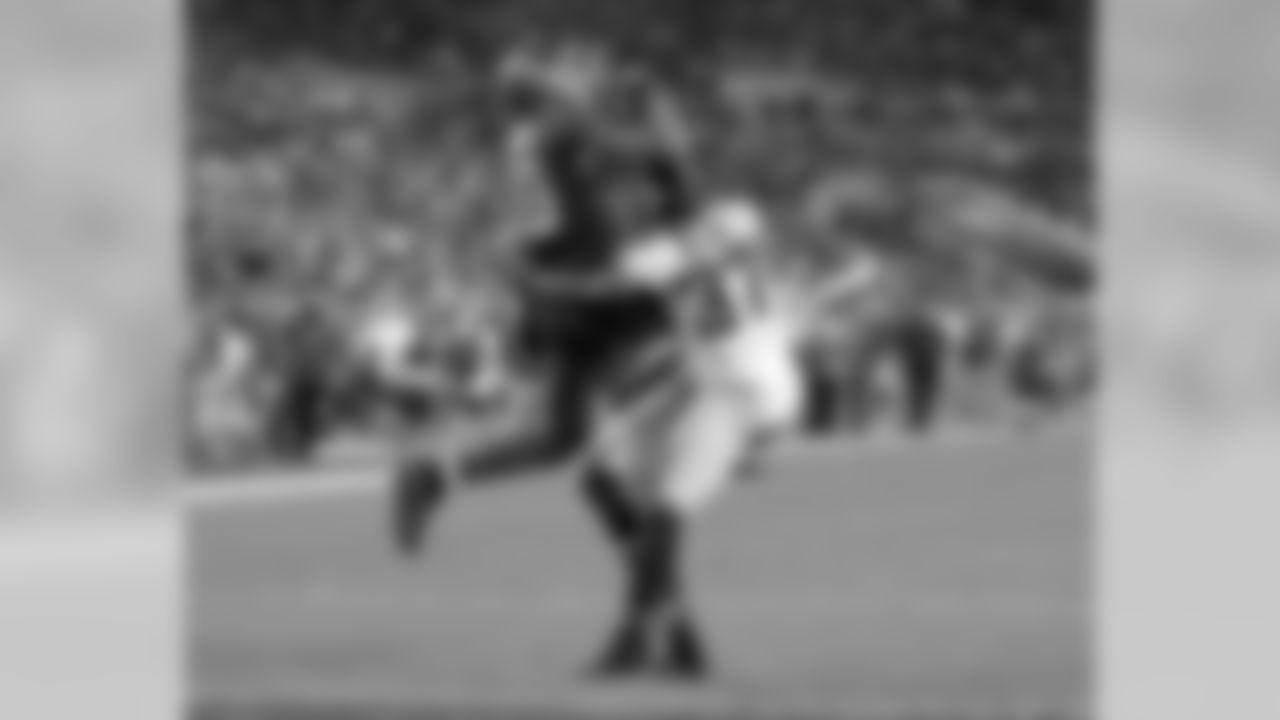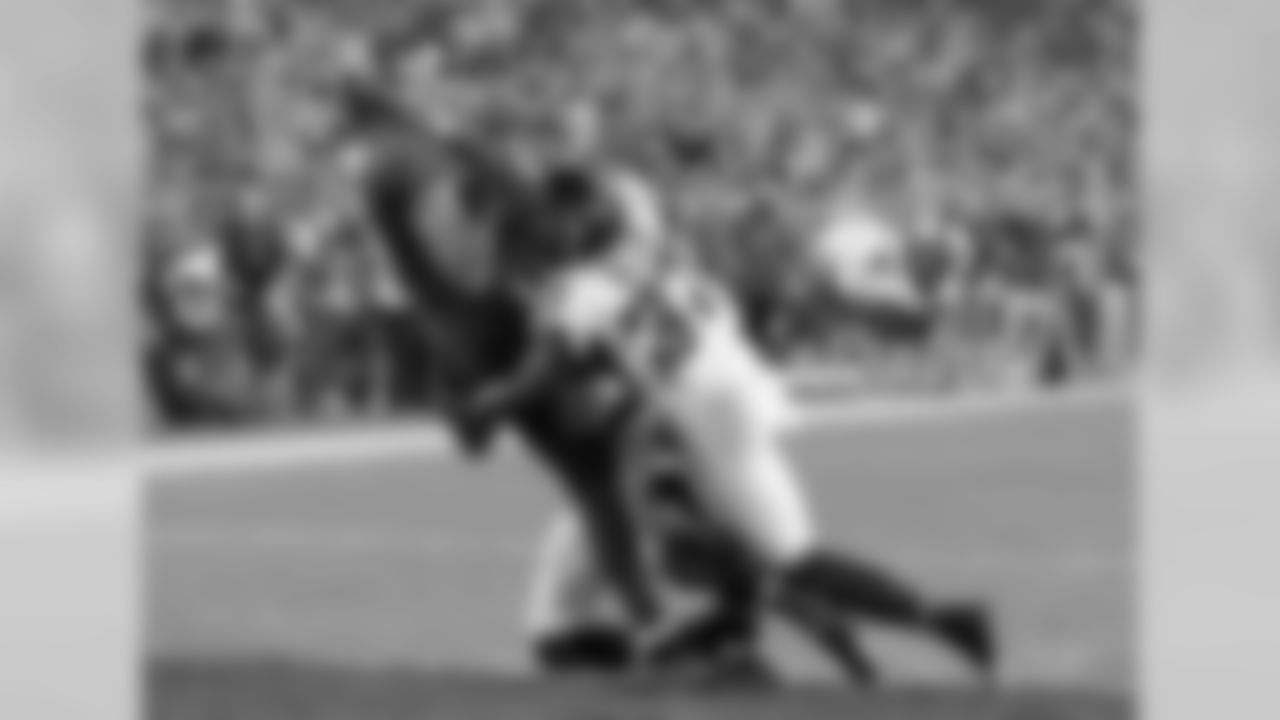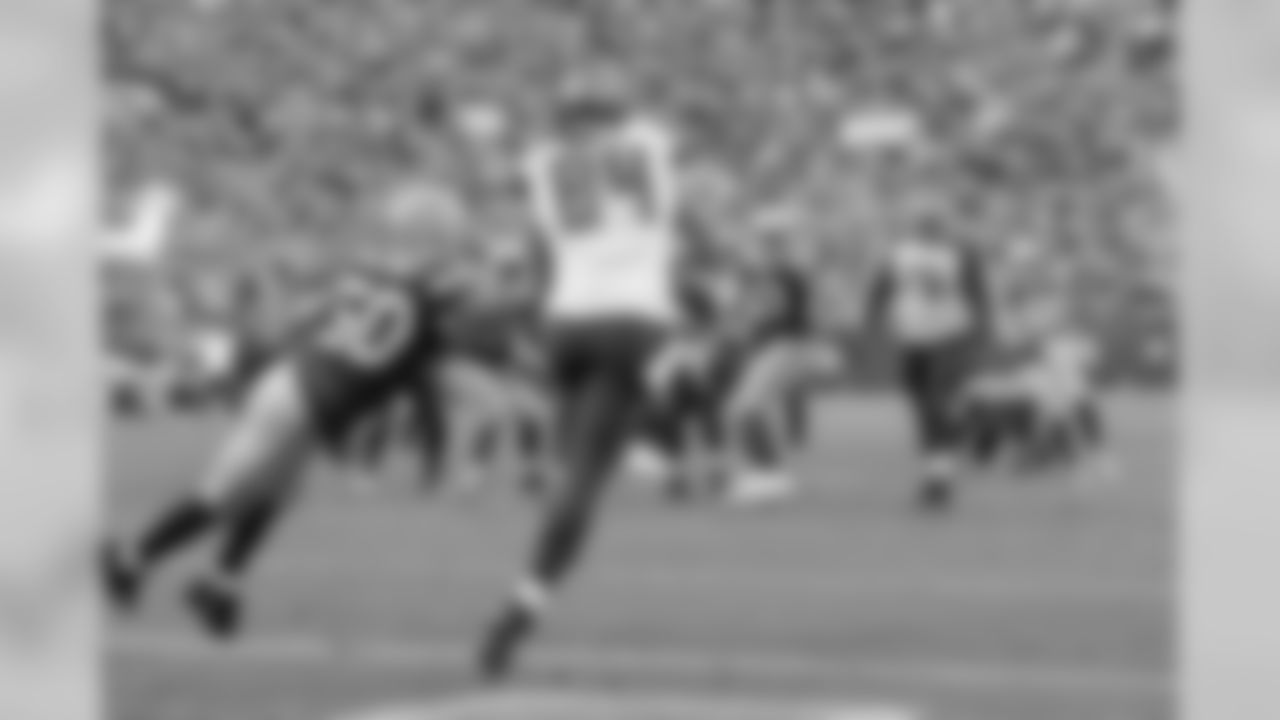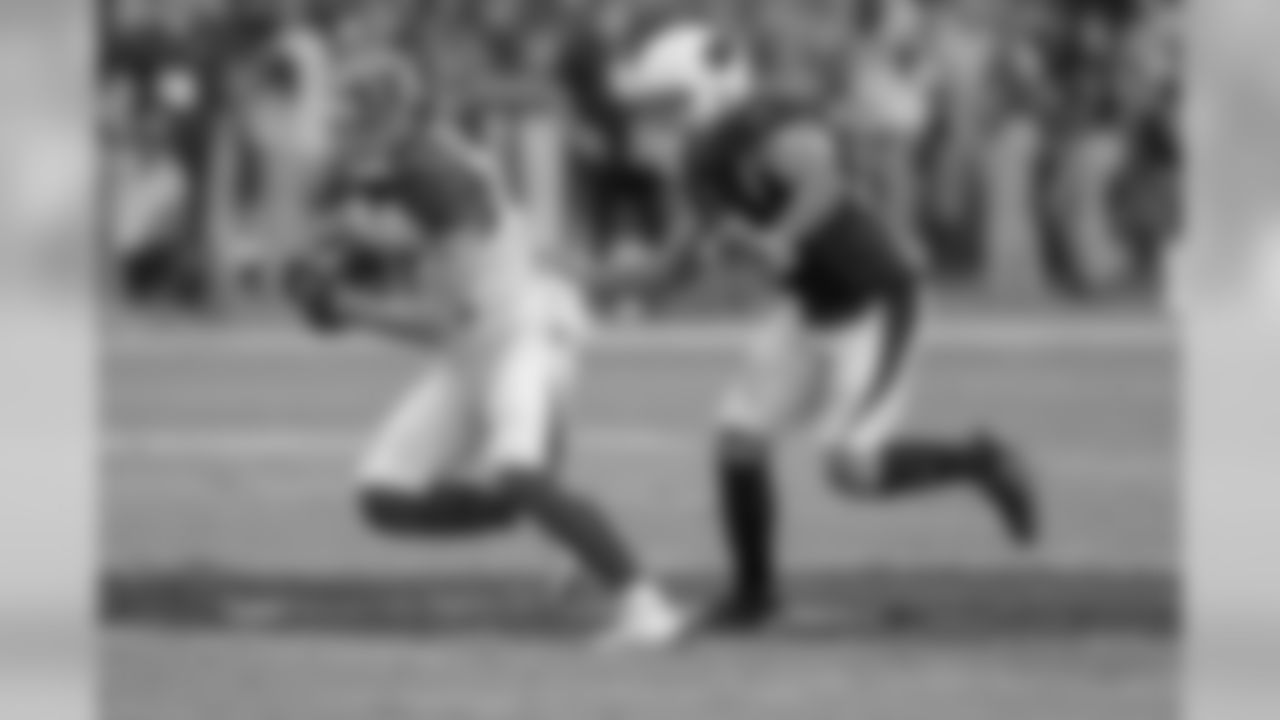In 2017, the Tampa Bay Buccaneers scored 86 points off takeaways. That's quite good! Only five teams in the NFL did better in that regard. Those same Buccaneers also turned the ball over 27 times on offense, and that's not very good at all. Only five teams gave it away more often.
As far as turnovers go overall, the '17 Buccaneers finished almost even, with a negative-one ratio, though at one point in November they were as high as plus-seven. That's not too strange; turnover ratio obviously fluctuates throughout a season from game to game. What is unusual is that on three different occasions in 2017 the Buccaneers had a positive turnover ratio in a game but still lost. To put that in perspective, over the previous four seasons combined Tampa Bay had only lost five games in which it had a positive turnover ratio.
To summarize: Scoring points off takeaways – good. Turning it over too often – bad. Losing multiple games while winning the turnover battle – weird.
Dig a little deeper into the statistical record of the Buccaneers' 2017 season and you can find plenty of combinations like these. The Bucs did some things very well this past season, did poorly in some other areas and occasionally produced numbers that were just odd. And sometimes all three of those things were related. Here are a few more examples:
1. Third-Down Performance
**
View some of the top photos of WR Mike Evans from the 2017 season.




















The Good:* Tampa Bay converted on 43.4% of its third-down chances on offense in 2017, which is an impressive performance in that category. It was the fourth-best conversion rate in the entire NFL, after only Atlanta (44.7%), Pittsburgh (44.0%) and Minnesota (43.5%). That helped the Buccaneers' offense produce 352 first downs in 2017, second only to New England (389) and 243 *passing first downs, the most in the NFL.
That is the second-best full-season third-down conversion rate the Buccaneers have ever posted. That's a hallmark of recent Tampa Bay offenses, as the team record was set just last year at 43.9%. The 2015 offense converted third downs at a 41.6% clip, fifth-best in franchise annals.
With quarterback Jameis Winston back in the lineup and riding a hot streak over the final five weeks of the season, Tampa Bay's third-down success rate went through the roof. Over those last five games combined, the Buccaneers' offense converted a stunning 59.0% of its third-down tries, including 63.9% in the first halves of those games. That was easily the best mark in the league; second was Pittsburgh at 52.9% and the overall league rate in that span was 37.6%.
The Bad: While Tampa Bay's offense was getting close to converting on half of its third-down attempts, the Buccaneers' foes were even closer to a 50% success rate. Tampa Bay's defense allowed a conversion rate of 48.1% on third downs, ranking last in the NFL in that category.
That was an unexpected and unwelcome development after the Bucs' defense actually ranked first in that very same category in 2016, at 34.4%. The third-down conversion rate allowed by Tampa Bay in 2016 was its eighth-best ever in a single season; the mark it allowed in 2017 was its worst ever across 42 seasons.
Due at least in part to a pass rush that never found its footing, the Bucs' defensive efforts on third down never changed much throughout the 2017 season. They allowed a 49.5% success rate in the first half of the season and a 46.7% rate in the second half of the season. As for individual games, Buccaneer opponents converted 49.0% in the first half and 47.4% in the second half.
**
24 photos for the 24 year old QB, Jameis Winston.
























The Unusual:** Weirdly, Tampa Bay's offense, while good on third downs across the board, was actually a little better at long third-down tries than medium-range attempts.
One would expect a team's success rate on third downs to gradually decline as the yards needed gets larger, and that generally is what happens. Third-and-one will be converted more often than third-and-seven. The Buccaneers converted on 60.4% of attempts needing one to three yards, and 52.8% when needing four to six yards. That rate dropped again in the seven to 10-yard range to 28.3%, but then actually spiked back up to 33.3% on all attempts that were longer than 10 yards.
That's a real anomaly. Even though the 2016 Bucs' offense was actually a little better on third downs, as noted above, it didn't have an unusually high success rate on very long attempts. That team was only successful 18.4% of the time on attempts of more than 10 yards.
**
2. Kick Coverage
**
View some of the top photos of TE Cameron Brate from the 2017 season.

























The Good:** Tampa Bay's special teams crew did not allow much damage on punt returns. Opponents averaged just 5.7 yards per return, which was the seventh-best coverage mark in the NFL. That continues a four-year run in which the Bucs have been very good in this department, allowing averages of 5.8 in 2014, 5.2 in 2015 and 5.3 in 2016.
With punter Bryan Anger excelling in hang time, directional punting and downing kicks inside the 20, the Bucs also suppressed the total number of returns they had to face. The Bucs allowed only 27 punt returns in 2017, 12th-lowest in the NFL. Anger's precise kicking combined with some good coverage work from the likes of Devante Bond, Keith Tandy and Chris Godwin to keep opposing teams from winning the field-position battle on punts.
The Bad: As Head Coach Dirk Koetter noted in his final press conference for the 2017 season, the Buccaneers lagged behind most of the NFL in 2017 in producing touchbacks on kickoffs, an infrequently-invoked statistic that can have sneakily big ramifications. Kicker Pat Murray, who took over for the struggling Nick Folk after four games, did an outstanding job on field goals in his second go-around with the Buccaneers, making 19 of 23 tries and only missing once from inside 50 yards. However, deep and high kickoffs were not Murray's greatest strength, and Tampa Bay ranked last in the NFL with a touchback percentage of 35.1%. Murray actually produced seven touchbacks in his first two games, on 10 tries, but then notched just seven more the rest of the way.
This became an issue at the end of the season when the Buccaneers surrendered long kickoff return touchdowns in each of their last two games. That's an indictment of the coverage on those two snaps, of course, but the fewer opportunities a team gives its opponents to run the ball out, the fewer chances there will be for a breakdown.
"Part of kicking it to the end zone if you can kick it to the end zone is hang time and that's one thing Pat struggled with is hang time on his kickoffs," said Koetter, who praised Murray's work in the very important aspects of field goals and extra points. "When a guy is getting the ball in not the proper hang time and you have to cover those kicks, it just makes it tougher on your coverage time. We struggled with that the last two weeks especially of the season."
Meanwhile, opposing kickers repeatedly blasted it deep with little difficulty against the Buccaneers, who were more than happy to take the touchback and the ball at the 25-yard line. The Bucs' return team took a touchback on 74.7% of kickoffs, the highest percentage in the NFL.
**
View some of the top photos of LB Kwon Alexander from the 2017 season.




















The Unusual:** The Bucs were able to take the ball away in the kicking game better than any other team in 2017.
In Tampa Bay's season-capping win over New Orleans, the visiting Saints got an early boost when Alvin Kamara returned a kickoff 106 yards for a touchdown. Tampa Bay's special teams evened the score in the fourth quarter when Josh Robinson forced a fumble by Tommylee Lewis on a punt return and Isaiah Johnson scooped up the loose ball and took it into the end zone.
That was the fourth time the Buccaneers recovered an opponent's fumble on a punt or kickoff return in 2017. Such plays are not particularly rare across the NFL – 21 of the 32 teams got at least one takeaway in the return game – but it is unusual to get so many of them. Eleven teams had zero special teams takeaways, 14 had one takeaway, four had two and two had three. Only the Buccaneers had four.
Two of those four kick-return fumble recoveries were returned directly for touchdowns. The other two were quickly converted into touchdowns by the Buccaneers' offense.
**
3. Downfield Passing
**
View some of the top photos of LB Lavonte David from the 2017 season.




















The Good:* Tampa Bay's passing attack, particularly when Winston was healthy, was very adept at pushing the ball downfield on medium-range attempts. The Buccaneers, who had the second-most gross passing yards overall in 2017, got 2,949 of their 4,607 yards at the point of the catch. That statistic is given the abbreviation of Y@C and is to be distinguished from YAC, which indicates yards made *after the catch. If a receiver catches a pass 20 yards downfield and then runs another 10 yards, he has recorded 20 Y@C and 10 YAC.
The Buccaneers' average of 7.8 Y@C per completion was also the highest in the NFL, with only Houston (7.7) coming close. Winston's strong arm and accuracy on mid-range throws, as well as big and accomplished route-runners like Mike Evans and Cam Brate allowed the Buccaneers to excel on passes that were caught farther down the field than the average offense.
The Bad: Though it is somewhat by the same offensive design that created that high Y@C average, the Buccaneers' passing attack was not good at generating YAC in 2017. That's an area in which Mike Evans professed before the season he wanted to become more productive, and the addition of speedster DeSean Jackson, a good open-field runner, was expected to generate more YAC as well.
It didn't happen. Tampa Bay was 20th in total YAC (1,658 yards) and 31st in YAC per reception (4.4). That was a slight improvement from 2016, when the team was 29th in total YAC (1,433) and 31st in YAC per reception (4.0), but not a particularly significant one.
The Unusual: Tampa Bay's high Y@C average, as noted above, as well as marks of 7.61 yards per pass attempt and 12.19 yards per completion (ninth and third in the NFL, respectively) would seem to be indications of a passing attack that hit a lot of deep downfield throws. In fact, the Buccaneers tied for 17th in completions of 20 or more yards and had just two complete passes of 50 or more yards, one on their last offensive play of the entire season.
What the Bucs were specifically very good at was completing passes for gains between 15 and 19 yards. Tampa Bay had 67 such completions during the 2017 season, the most in the NFL by a healthy margin. New England was second at 57 and only Arizona joined the Bucs and Patriots over 50, at 54. The per-team average of such completions in 2017 was 36.2; Tampa Bay nearly doubled that.
**
4. Early and Late Scoring
**
View some of the top photos of WR Adam Humphries from the 2017 season.


















The Good:** The Buccaneers were adept at scoring late in games in 2017, as was most thrillingly displayed on Chris Godwin's game-winning touchdown catch on the last offensive snap of the season.
Tampa Bay was only the 18th-highest scoring team in the NFL this past season, averaging 20.9 points per game. However, no team scored more points in the fourth quarter than the Buccaneers. Tampa Bay and Seattle tied in that category, with 142 points each. The Bucs scored more points in the fourth quarter than they did in any other two quarters combined in 2017.
In many cases, the Buccaneers had to score late in order to have a shot at winning, as they tended to fall into early-game deficits. Most of their comebacks ultimately came up short, leading a to a 1-4 mark in three-point decisions and a 3-7 record in seven-point decisions. Still, the Bucs were able to rally when they needed to, more often than not. Tampa Bay's 18 fourth-quarter touchdowns were second only to the 19 that Seattle scored.
The Bad: The 2017 Buccaneers required a high number of rallies because they too often started slowly. Tampa Bay's offense scored a touchdown on the opening possession of their Week 17 win over New Orleans, but that was the exception this past season. For the most part, the Bucs' opening drives were not particularly successful.
The Buccaneers scored 26 points on their collective game-opening drives in 2017, which tied for 17th in the NFL. All of their first drives in the second half of games produced 24 points, which was 26th best in the NFL. Combine those two totals together and Tampa Bay's 32 half-opening drives of 2017 produced 50 points, which ranked 23rd in the NFL. By contrast, New England scored 111 points on such possessions and New Orleans scored 101.
The Unusual: Likely due to their success on third downs, the Buccaneers were one of the best teams in the NFL at putting together long, time-consuming drives. However, they were in the bottom half in the league in terms of scoring on such drives.
Tampa Bay's offense embarked on 27 drives in 2017 that lasted for five or more minutes on the game clock. Only Carolina (30), Dallas (30) and Philadelphia (28) had more. The average in this category for the 12 playoff teams was 24, and the Buccaneers beat that.
However, due in part to red zone struggles, the Buccaneers only scored touchdowns on nine of those 27 five-minute drives. That means they turned 33.3% of their extended drives into touchdowns, which was only tied for 15th-best in the NFL. Tampa Bay's red zone touchdown efficiency of 49.1% was well below the team's stated goal of 60% and ranked 24th in the NFL.























